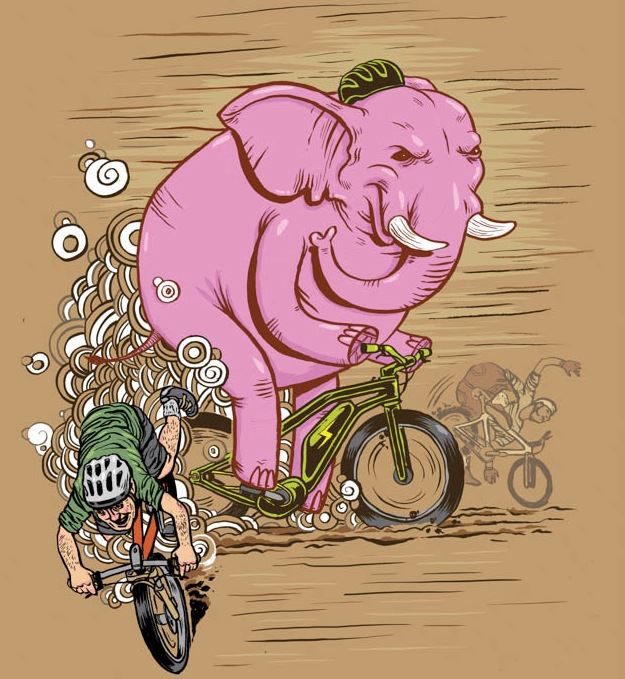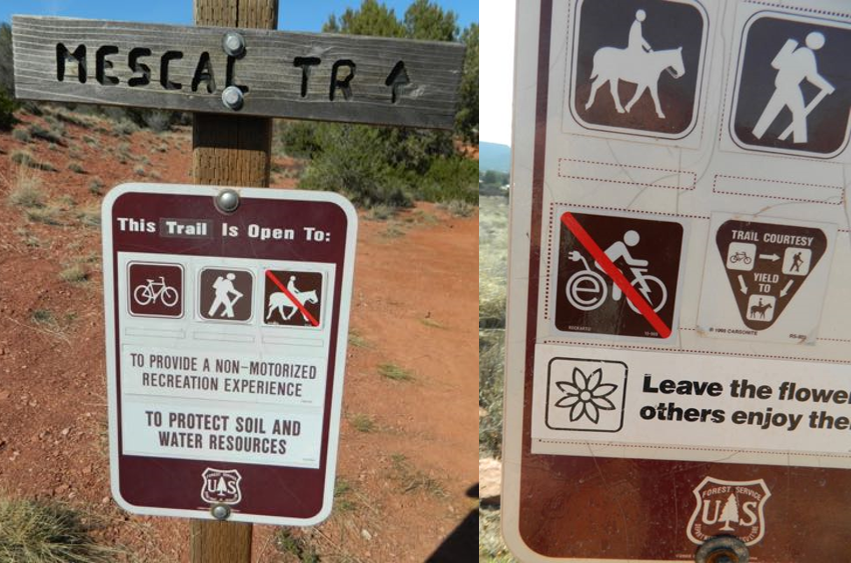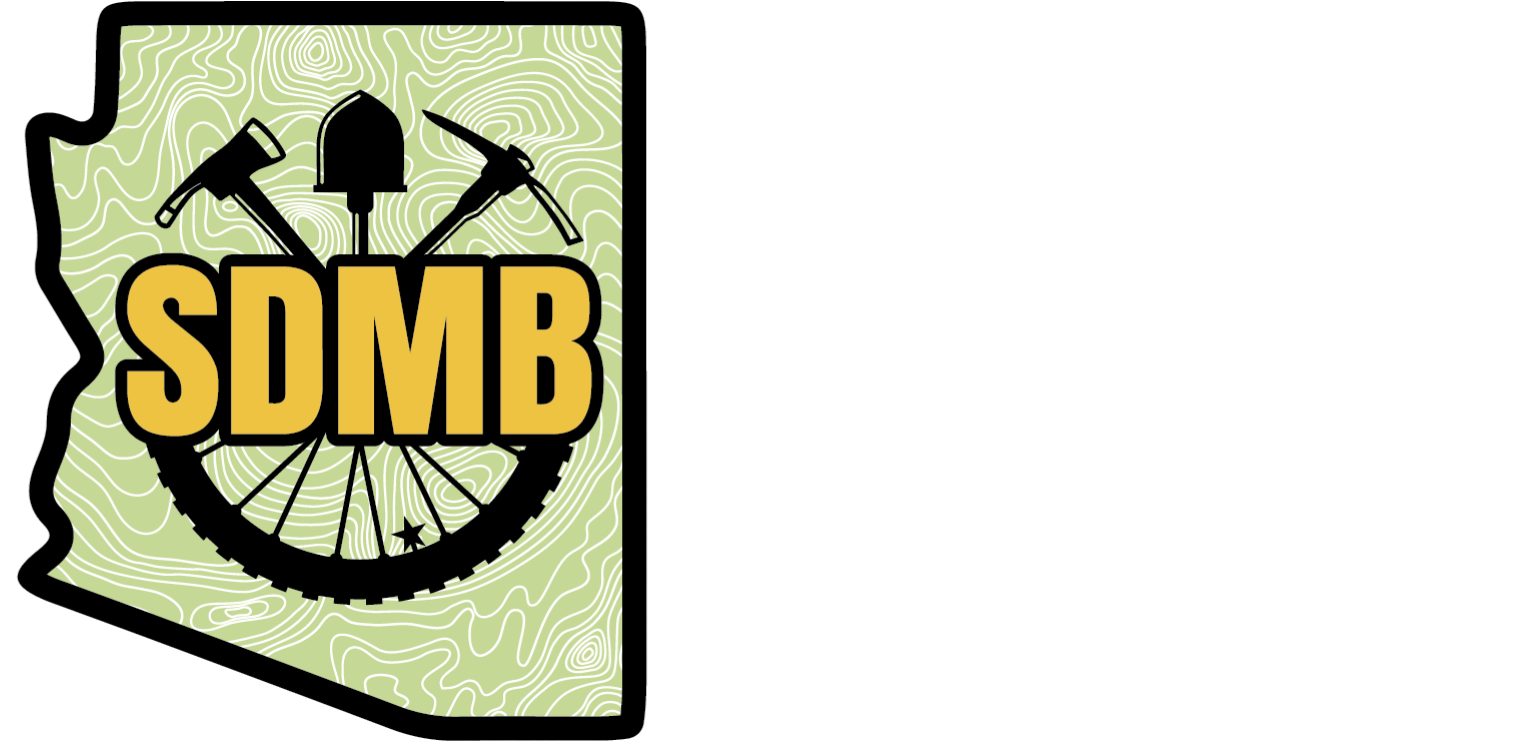E-Bikes & Tucson Trails: What You Need to Know
E-Bikes, or electric bikes, have become increasingly popular in recent years with most major bike companies selling at least one mountain E-Bike. They have become widely accepted across much of the rest of the world; however there has been significant pushback to their acceptance in the United States. Here we strive to objectively discuss some of the ongoing controversy around E-Bikes, lay out the rules governing E-Bike usage for different land managers, and lastly identify where they can and cannot be ridden in the greater Tucson area.
Note that SDMB as an organization DOES NOT have an position about E-Bike usage, however, we partner with multiple land-management agencies to build, maintain, and advocate for trails in the area and therefore feel it is our responsibility to explain and discuss local policy and potential controversy surrounding E-Bikes. Understanding the history of the debate over mechanized vs. motorized recreational designations is important to understanding the current debate over E-Bike usage, especially for e-mountain bikes on multiple-use single-track trails.

^ “The Elephant in the Room” by Stephen Haynes (originally published in DirtRag 2015
)
What is an E-Bike?
There is a range of classifications for E-Bikes (see classifications below), but at a minimum all have a battery powered motor and pedal-assist function. Additionally, class 2 E-Bikes have a throttle that can work without pedaling. E-Bikes have provided a great resource for bicyclists who could not ride certain terrain or certain distances (due to age, injury, illness, or lack of physical ability) by providing an additional battery powered pedal-assist or throttle function. This also presents a potential problem, as the pedal assist and throttle functions allow more power to be transferred by any particular rider onto the riding surface.
The three E-Bike classes are defined as follows:
- Class 1: The Class 1 e-bike provides assistance only when you pedal, and stops assisting when you reach 20 mph — great for bike lanes, bike paths, roads or anywhere you'd take a traditional bike.
- Class 2: The Class 2 e-bike is equipped with a throttle which provides a boost without pedaling, and stops assisting at 20 mph.
- Class 3: The Class 3 e-bike is equipped with a speedometer, and only assists until the bike reaches 28 mph — an excellent choice for commuters. The most popular bikes fit into Class 1 or Class 3 because riders still want to pedal.
*All classes limit the motor’s power to 1 horsepower (750W).
Classification of E-Bikes differs based on land-management agency and riding area. Many agencies (U.S. Government: US Forest Service / Bureau of Land Management / National Park Service, Pima County) define all E-Bikes as motorized therefore only allowing E-Bikes where other motorized vehicles (e.g. motorcycles) can also travel. However, some agencies (locally, the State of Arizona) consider class 1 E-Bikes to be functionally similar to non-E-Bikes and therefore allow them to travel everywhere that a mechanized bicycle can also travel. This disparity in interpretation means that is E-Bike access is not ubiquitous across all trail networks. From here on we will only discuss Class 1 E-Bikes as they relate to traditional road and mountain bikes due their popularity and to their variation in regulation by land-management agencies.
Additionally, E-Bikes were initially very easy to spot, as they had an externally mounted battery, large motor case, and heads up control panel (e.g. Haibike SDURO shown below). However, as E-Bike design has progressed in recent years, they have come to look increasingly like non-E-Bikes (e.g. Specialized Turbo Levo below). This “blending in” of E-Bikes has led to difficulty in differentiating E-Bikes from normal bikes for park and law enforcement rangers and therefore regulating them within different agencies.

What’s all the controversy about?
Remember the mention of motorized vs. mechanized travel above? This debate stemmed from federal agency interpretations of the Wilderness Act of 1964 (Act) (for much more information on federal wilderness click here ). That act defined motorized methods of travel as inconsistent with wilderness character and banned motorized travel within all future wilderness areas. Separate federal agencies then interpreted the Act, subsequently developing their own regulations governing recreational use within wilderness areas managed by each agency. In those regulations, the U.S. Forest Service defined bicycles as a mechanized form of transport, as they are human powered but provide a mechanical advantage (via gearing) to the rider. The agencies also interpreted that mechanized travel was not consistent with wilderness character and banned mechanized forms of transport (including bicycling) from all current and future wilderness areas. Additionally, there is a currently a push by some members of the mountain bike community to reopen that debate about the interpretation of whether mechanized travel is consistent with wilderness character, as it was not explicitly stated in the Act and bicycles were riding previously in areas that have since been designated wilderness. That long-term debate directly influences the current debate about E-Bike usage on designated non-motorized trails within the United States today.
Federal trails and roads are all specifically designated based on the types of allowable uses on that trail or road through the formal travel management process. These use types include hiking, horseback riding, bicycle riding, motorcycle riding, larger off-highway vehicle (OHV) driving, and street-legal vehicle driving (see table below). As E-Bikes are considered motorized, they are lumped in with motorcycles in where they are allowed to ride on federal lands. Many trails in popular riding locations (e.g. Santa Catalina Mountains) are designated as non-motorized, therefore E-Bikes are not allowed on those trails. Additionally, many state and local jurisdictions (locally, Pima County) have adopted federal guidelines for designating allowable uses on trails to maintain consistency with adjacent federal lands.

^ U.S. Forest Service singletrack trail signage in Sedona, AZ
Allowable uses by trail/road designation:
| Designation |
Allowable Uses |
| Non-motorized/non-mechanized trail |
Hiking, horseback riding |
| Non-motorized trail |
Hiking, horseback riding, bicycling |
| Primitive motorized trail |
Hiking, horseback riding, bicycling, E-Bike / motorcycle riding |
| Primitive motorized road |
Hiking, horseback riding, bicycling, E-Bike / motorcycle riding, OHV driving |
| Improved motorized road |
All other uses and street-legal vehicles |
Regardless of how you feel about the wilderness debate or how mountain bikes or E-Bikes have been classified by federal agencies, current regulations govern where and how we can recreate. Not following posted regulations not only opens you up to a citation from law enforcement, but it also risks losing continued future access for all mountain bikers on our local trails.
So, where can I ride an E-Bike?
In order to answer this question, you need to know what agency manages your local riding area. If you don’t already know, please read our first SDMB In the Know dispatch: Land Managers 101. E-Bikes are prohibited from all non-motorized trails managed by any federal agency or Pima County. E-Bikes are allowed on state lands, City of Tucson property, and trails managed by the Town of Marana (please see the table below for specific riding areas). *Note that as the Arizona Trail was designated as a federal non-motorized National Scenic Trail, E-Bikes are not allowed on it even if it is passing through lands that would otherwise allow E-Bikes (i.e. AZT in Oracle State Park). Additionally, while the Town of Marana has provided funding for trail construction and now maintains trails within Tortolita Mountain Park, Pima County manages this land, so E-Bikes are not allowed on the Ridgeline/Wild Burro Loop and roughly the upper half of Wild Mustang. Bikes (and E-Bikes) are only allowed on specific Town of Marana managed trails in the area including Lower Wild Burro (above Alamo Spring Spur)*, Alamo Spring Trail and Spur*, lower Wild Mustang, upper Javelina, and the Tortolita Preserve (* Note as these trails are accessed through the Tortolita Mountain Park, one could not ride an E-Bike to these trails). Finally, note that there are also many Forest Service motorized trails and roads (north and east side of Catalina Mountains, Redington Pass area, Santa Rita Mountains) that allow E-Bikes as well as motorized vehicles (see Coronado National Forest Motor Vehicle Use Maps here ).
Essentially, this means that E-Bikes can legally ride on less than ¼ of the ~400 bike-legal miles of single-track in the greater Tucson area.
Land management agencies and local riding areas where E-Bike are or are not allowed to ride:
| Agency |
Local Riding Areas |
E-Bike Use Allowed? |
| U.S. Forest Service |
Santa Catalina Mtns (Mt. Lemmon) , Redington Pass , Santa Rita Mountains |
NO |
| National Park Service |
Saguaro Natl Park: Cactus Forest Trail , Hope Camp Trail |
NO |
| Pima County |
Tucson Mountain Park , Sweetwater Preserve , Enchanted Hills , McKenzie Ranch , Big Wash Trail , Colossal Cave Mountain Park , Painted Hills , Tortolita Mountain Park |
NO |
| *Multiple Agencies |
NO |
|
| Town of Marana |
YES |
|
| City of Tucson |
YES |
|
| AZ State Parks |
NO |
|
| AZ State Land Dept. |
Fantasy Island , Honeybee Canyon , 50-Year , Willow Springs / 24 HOP Course |
YES |
It is imperative that local riders know and comply with the posted regulations governing E-Bike use for all local riding areas. Not doing so could potentially jeopardize future access for all mountain bikers. If you are a rider considering purchasing an E-Bike, please research where you can legally ride it. Bike shop owners and employees can be crucial in this education process by informing potential E-Bike buyers that they will be limited to riding in the few local areas that allow E-Bikes or trails and dirt roads that also allow motorized vehicles.
Thank you for taking the time to learn about where E-Bikes can legally be ridden in the greater Tucson area. If you have any questions about E-Bike or general mountain bike trail access, please contact us at SDMB.
Share Post
RECENT ARTICLES





